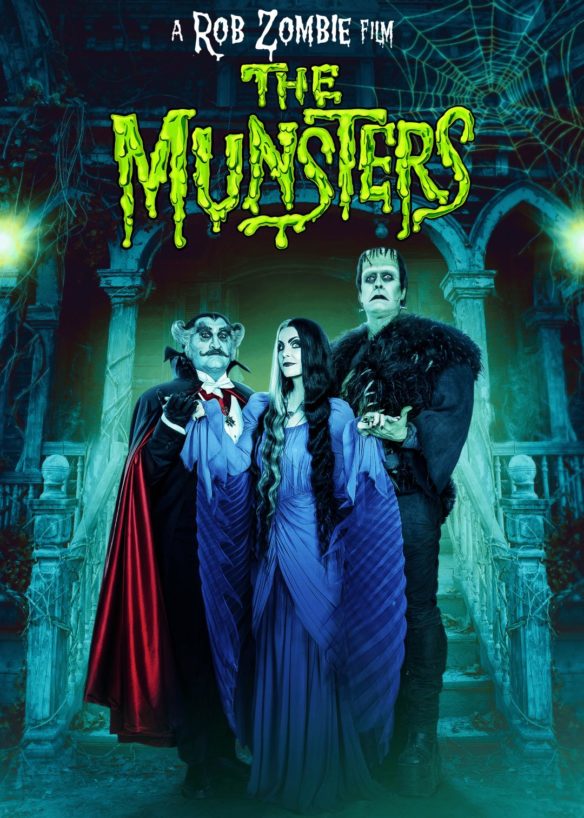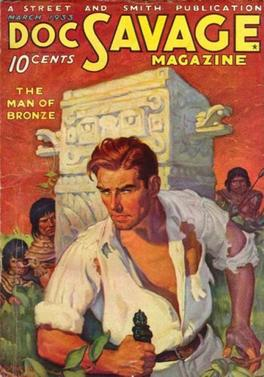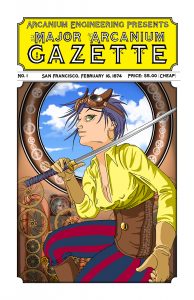(1) SPSFC2 COVER CONTEST: HELP RATE THE TOP 100. The second year of the Self-Published Science Fiction Competition has kicked off. While the reviewing teams are judging the books, you can help judge the covers. Vote in the SPSFC2 Cover Contest – People’s Choice at Pollunit.
The teams scored the covers of the 30 books assigned to each of them and picked their top ten, for a total of 100 covers. You will be asked to give each cover from 0 – 10 points.
Covers are displayed in batches of 10 and their order is randomized for each viewer.
The poll is open until September 9. When it’s finished, we’ll find out which SPSFC contestant’s cover people think is the best.

(2) DOUBLE PLUS GOOD? David Robson explores radical optimism – “hopepunk” – in “The sci-fi genre offering radical hope for living better” at BBC Culture.
Alexandra Rowland didn’t mean to spark a new artistic genre. In 2017, however, the fantasy author had a moment of inspiration. Rowland had been contemplating the rise of grimdark – the subgenre of fantasy fiction typified by George RR Martin’s A Song of Ice and Fire (the inspiration for the TV series Game of Thrones) – which emphasises the flaws in human nature, and focuses on our capacity for cruelty.
But what could describe literature that instead focuses on our capacity for good? “The opposite of grimdark is hopepunk. Pass it on,” wrote the author in a short post on Tumblr. The post soon went viral – and by 2019 the term had entered the Collins English Dictionary, defined as “a literary and artistic movement that celebrates the pursuit of positive aims in the face of adversity”.
Various works of fiction – including the Lord of the Rings and Terry Pratchett’s Discworld series – have now been labelled as examples of hopepunk, along with a slew of contemporary writers.
“Cautionary tales are very important,” says Becky Chambers, one of the leading authors associated with the hopepunk movement, who has won a much-coveted Hugo Award for her sci-fi Wayfarer series. “But if that is all that you have, you risk nihilism.”…
(3) OOPS. The people who ran Discworld Convention 2022 apologize for leaving out something important: “A Message from the Committee – Discworld Convention 2022”.
Now that we have caught up on our sleep and have taken stock, we realise there was a major omission in both our opening and closing ceremonies. Although Terry was in all our hearts and thoughts before and during the Convention, we didn’t include our tribute to him in the ceremonies.
That shortcoming is something that we deeply regret and humbly apologise to all of you.
There is a lot that we can feel pleased about, especially given the difficulties we all faced in planning and running the Con, but they are all overshadowed by our collective oversight.
But what now? Anything we could do in the short term is far too little, far too late. But in the long term? For that, turn inwards and try to ask what Sir Terry would say if he saw what we did. And this is the answer we hope he would give:
“Do Better. BE Better. And don’t be such tossers again.”
So, that is what we plan to do. To be better. And to remember what he and Vimes taught us. A city, a community, lives and dies by the people in it. And committees are there to serve them, to put them first, and do right by them, by you.
2024 is both a long way away and no time at all, so we’re already working to prove deserving of your, and Sir Terry’s, trust. Hopefully, you’ll give us the chance.
Yours in humility, the ConCom that was and the ConCom that will be.
(4) I CAN’T BELIEVE MY EARS. “Zachary Quinto finds family Spock Connection in ‘Who Do You Think You Are?’”.
While researching Zachary Quinto’s family tree for his upcoming appearance on Who Do You Think You Are?, Ancestry.com found a surprising connection in his family’s past and his character, Spock. In a newspaper record from 1899, Quinto’s great-grandfather P.J. McArdle wrote a letter to the editor that closes out with “May it live long and prosper” – almost the same words used in the iconic Vulcan greeting and farewell “live long and prosper,” first introduced by Leonard Nimoy as Spock on Star Trek: The Original Series and spoken by Quinto as Spock for the Kelvin Universe films. Quinto’s full journey will air on Who Do You Think You Are? on August 14 at 7/6c on NBC and stream on Peacock.
(5) UNCORKING A VINTAGE YEAR. First Fandom Experience traces “A Year In the Life of a Fan: Joe Kennedy in 1946”.
In our series of posts in support of the 1946 Project at Chicon 8, we’ve already explored the year in fandom. We also want to understand what it was like to spend that year as an active fan.
One of the most prolific and well-regarded fans was Joseph Charles “Joe” Kennedy. His remarkable 1946 is worthy of note, if not entirely representative of how most fans spent their year….
January
January 1 — the very dawn of 1946 — Kennedy joined a gathering at the New Jersey home of Sam Moskowitz. This was the second meeting of the self-designated “Null-A Men,” satirically named after the controversial novel by A.E. van Vogt. As Moskowitz noted in The 1946-47 Fantasy Review, “The initial idea of a loosely knit, social group was abandoned when 10 fans showed up… The idea of an organizational meeting was expanded into a full-fledged convention.” This was the origin of the “First Post-War Eastern Science Fiction Convention,” which would convene in March of that year.
(6) AUREALIS AWARDS NEWS. The “2022 Aurealis Awards are open for entry”. Full information at the link.
The Aurealis Awards, Australia’s premier awards for speculative fiction, are for works created by an Australian citizen or permanent resident, and published for the first time between 1 January 2022 and 31 December 2022.
We strongly encourage publishers and authors to enter all works published already this year by September 30, 2022, then subsequent publications as they are released; our judges appreciate having time to consider each entry carefully.
Entries for the Aurealis Awards main categories close on December 14, 2022.
(7) TOP OF THE LIST? GameRant contends “Tolkien’s Most Obscure Story Is Actually His Best One”. (Though it’s unlikely that “Leaf By Niggle” will qualify as “obscure” among readers here.)
…The writer himself said in a letter to his friend Stanley Unwin:
‘That story was the only thing I have ever done which cost me absolutely no pains at all. Usually, I compose only with great difficulty and endless rewriting. […] It took only a few hours to get down, and then copy out.’
This is definitely unusual for Tolkien, who is famous for spending decades carefully crafting and sculpting each individual character, language, culture, and history. And the suddenness of its appearance in Tolkien’s mind isn’t the only thing that makes the narrative so different from many of his other works. The story centers around one main character’s thoughts, experience, and journey, rather than a group of companions or a fellowship like most of the long-form works that he is famous for. What’s more, it is very introspective, reflecting much of Tolkien’s own thoughts and tribulations as a creative….
(8) MEMORY LANE.
2022 – [By Cat Eldridge.] Usually here we look at something that has already happened but we’re going to look at something that has not happened yet, Rob Zombie’s The Munsters. It’s due to break out almost exactly a month from now as the release date in the States is supposed to be September 27.
The Munsters as you well know started out as a television series in 1964 and was followed by The Munsters Today and the recent one-off Mockingbird Lane which was intended as a pilot. Several Munsters movies were released, three of which had original cast members.
So how is that Rob Zombie of all individuals is releasing a Munsters film? Very good question I’d say. Well he does have a fondness for The Munsters. Zombie a quarter of a century ago released the single “Dragula”. (I kept looking at that and seeing Dracula.) The title came from the name of Grandpa’s dragster DRAG-U-LA. (You can see the plate here.) Zombie’s music video mimics, sort of, the Munsters family getting into Grandpa’s car for a ride.
This film takes place prior to the events prior to the series, serving as an origin for the characters. It is directed and written by Zombie who also producing it. That’s either a very good thing or a very bad thing. It is very obviously a vanity project for him.
The cast is mostly not anyone that I recognize but here they be for your perusal: Jeff Daniel Phillips, Sheri Moon Zombie, Daniel Roebuck, Richard Brake and Sylvester McCoy. Wait, we have a Time Lord here? McCoy is playing Igor.
And if you’ve not guessed yet, Sheri Moon Zombie who plays Lily Munster is married to Rob Zombie. You really, really don’t want to look up her filmography.
And Jeff Daniel Phillips who plays Herman Munster has an equally unídistinguished acting career. Remember the Cavemen series? (Hopefully you don’t.) He was Maurice in it.
Casandra Peterson, better known as Elvira, played Barbara Carr who is described as the #1 real estate agent in all of Mockingbird Heights.
The premise is that is a love story taking place in Transylvania where Herman and Lily met, dated and departed for here as her father didn’t at all like Herman. They married after moving here and the prequel leads up the series we know.
Transylvania? WTF were they doing there? Frankenstein Castle located in the city of Darmstadt in Germany. It is often thought that this castle may have been the inspiration for Mary Shelley in writing her novel. Definitely not in Transylvania.
It was filmed entirely in Hungary including the construction from scratch of 1313 Mockingbird Lane duplicating the house from the Mockingbird Lane pilot exactly according to Zombie who used the plans for it.
Now if your planning on going out to the nearest cinema to settle in with popcorn and your favorite beverage, don’t bother. The only place that you can see it is on Netflix as they financed it. Peacock originally was thought to have rights to it but that turned out to incorrect.
The latest trailer is here.

(9) TODAY’S BIRTHDAYS.
[Compiled by Cat Eldridge.]
- Born August 28, 1915 — Tasha Tudor. American illustrator and writer of children’s books. Her most well-known book is Corgiville Fair, published in 1971, the first of a series to feature anthropomorphic corgis. (Died 2008.)
- Born August 28, 1916 — Jack Vance. Where to start? The Dying Earth series? Or perhaps the Lyonesse trilogy? I think I’ll pick the Demon Princes series. Damn he was good. Hugos? Oh yes. Discon was his first for “The Dragon Masters” short story followed by winning one for “The Last Castle” novellette at NYCon 3. His autobiography, This is Me, Jack Vance! (Or, More Properly, This is “I”), Jack Vance, won at Aussiecon 4. Let’s not forget that he has a World Fantasy Award for Life Achievement as well. And a SFWA Grand Master Award, too. (Died 2013.)
- Born August 28, 1917 — Jack Kirby. Responsible for a goodly part of modern comics from Captain America and the X-Men to Challengers of the Unknown and the New Gods. (Another DC film that got cancelled.) I had forgotten that he created the Black Panther. (Died 1994.)
- Born August 28, 1948 — Vonda McIntyre. I’ve read a number of her works including Dreamsnake and The Moon and the Sun which are all phenomenal. The latter was based on a short story of hers done as a faux encyclopaedia article “The Natural History and Extinction of the People of the Sea”, that was illustrated by Le Guin. Way cool. (Died 2019.)
- Born August 28, 1951 — Barbara Hambly, 71. Author of myriad genre works including the James Asher, Vampire Novels, The Windrose Chronicles, and the Sun Wolf and Starhawk series. Some Trek work. Was married for some years to George Alec Effinger.
- Born August 28, 1965 — Amanda Tapping, 57. Stargate franchise of course, also lead in the rather smashing Sanctuary, Travelers, the Killjoys which I still need to see, Riese, Earthsea, Flash Forward and X-Files.
- Born August 28, 1978 — Rachel Kimsey, 44. She voices Wonder Woman on Justice League Action, yet another series that proves animation, not live, is the DC film strong point. Here’s a clip of her voice work from that show. She was Zoe, the old imaginary friend of Frances, on Don’t Look Under The Bed, a supposedly horror that ran on Disney. Disney, horror? And she was a zombie in the “Don’t Let Her Pull You Down” music video by New Found Glory.
(10) COMICS SECTION.
- Tom Gauld
(11) GAME FACE. The video game The Stanley Parable “is about what it means to be free in a tightly constrained simulated world.” From “Exhausting All Possibilities” by Gabriel Winslow-Yost in The New York Review of Books. (The complete article is behind a paywall.)
…The structure of the game is simple. The narrator—voiced in a ripe, pompously authoritative English accent by Kevan Brighting—tells us the story of the day that “would forever change Stanley,” when Stanley suddenly realizes that all of his coworkers have disappeared and leaves his desk to find out what’s happened. And we pilot Stanley through it: walking to the conference room to see if he’s forgotten about a meeting (he hasn’t), then upstairs to the boss’s office to see if he’s there (he is not), then stumbling upon a “terrible secret that lay buried below his feet” (a giant mind-control machine hidden in the basement) before triumphing rather easily over this subterranean evil (there’s an off switch) and heading outside for a sunlit happy ending….
(12) NUCLEAR WINTER IF RUSSIA DEPLOYS NUKES. [Item by SF Concatenation’s Jonathan Cowie.] To cheer you up as you wend your way to Worldcon…. Nature contemplates the unthinkable. “Nuclear War Between Two Nations Could Spark Global Famine”. What if Russia deployed nukes in its war against Ukraine?
Even a small conflict in which two nations unleash nuclear weapons on each other could lead to worldwide famine, research suggests. Soot from burning cities would encircle the planet and cool it by reflecting sunlight back into space. This in turn would cause global crop failures that — in a worst-case scenario — could put five billion people on the brink of death.
“A large per cent of the people will be starving,” says Lili Xia, a climate scientist at Rutgers University in New Brunswick, New Jersey, who led the work. “It’s really bad.”
The research, published on 15 August (L. Xia et al. Nature Food vol. 3, p586–596; 2022), is the latest in a decades-long thought experiment about the global consequences of nuclear war. It seems especially relevant now, given that Russia’s war against Ukraine has disrupted global food supplies, underscoring the far-reaching impacts of a regional conflict.
Nature this week points to the latest research that also reminds us of research a couple of years ago on even a small nuclear war. This earlier work also suggests that even a small war would have a huge impact. They developed a scenario of a small India–Pakistan nuclear war could lead to crops failing in dozens of countries — devastating food supplies for more than one billion people. 2020 primary research here.
The latest research is chilling. 100 weapons of just 15 kilotonnes each on urban targets, while ‘only’ giving 27 million direct deaths, would result in a quarter of a billion without food by the end of year two…
(13) TURN UP THE GASLIGHT. DUST presents a short film “Who Among Us”. Which player is the machine?
Directors’ Statement: We wanted to explore how the media and groupthink can cause a person to doubt what they know to be true. Seven’s character goes through the trauma of gas-lighting, but on a public scale. Reality television specifically exploits and bends the truth in this way. We just extrapolated how that would play out in the future when bots like Siri and Alexa become nearly indistinguishable from humans. Wouldn’t there be a game show where contestants have to figure out who among them is the machine? The fascinating part is how open we are to untested technology, especially when it’s entertaining. That can be a good thing for technologists. From firsthand experience building @artieapp (check it out on Instagram) we know that sometimes a glitch can become a feature. There is a fine line though. In the film it’s not clear whether the host is following a script, or if he’s manipulating the contestants of his own volition. Are we just a glitch away from disaster? Or are we a glitch away from a great discovery? That’s the idea behind our feature script, which examines the characters lives in the aftermath of the game show.
[Thanks to Chris Barkley, Michael Toman, Cat Eldridge, Jeffrey Smith, Angela Smith, SF Concatenation’s Jonathan Cowie, Mike Kennedy, Martin Morse Wooster, JJ, John King Tarpinian, and Andrew Porter for some of these stories. Title credit belongs to File 770 contributing editor of the day Peer.]






